Introduction – Tips to Design Urban Apartment Gardens
In the bustling heart of urban dwellings, the desire for greenery and connection to nature stays as robust as ever. However, cultivating a garden might also appear like a distant dream for those living in compact urban apartments. Yet, with thoughtful plans and innovative layouts, even the smallest areas may be converted into thriving havens of greenery and lifestyles and tips to design urban apartment gardens.
In this manual, we embark on an adventure to liberate the secrets of designing a small-space lawn in the confines of your urban condominium. From balcony blooms to window sill wonders, we will explore a myriad of techniques and strategies that will help you convey the beauty of nature into your city abode.
As we delve into small-area gardening, we’ll speak about practical considerations, including assessing available areas and choosing suitable flora, in addition to progressive answers like box gardening and vertical planters. By giving up this manual, you’ll be geared up with the expertise and thought to create a verdant oasis that now not handiest complements your dwelling space but nourishes your soul amidst the urban jungle.
So, let’s embark on this inexperienced journey collectively and discover the joy of cultivating a small-area lawn in your urban condo.
Assess Your Space – Tips to Design Urban Apartment Gardens
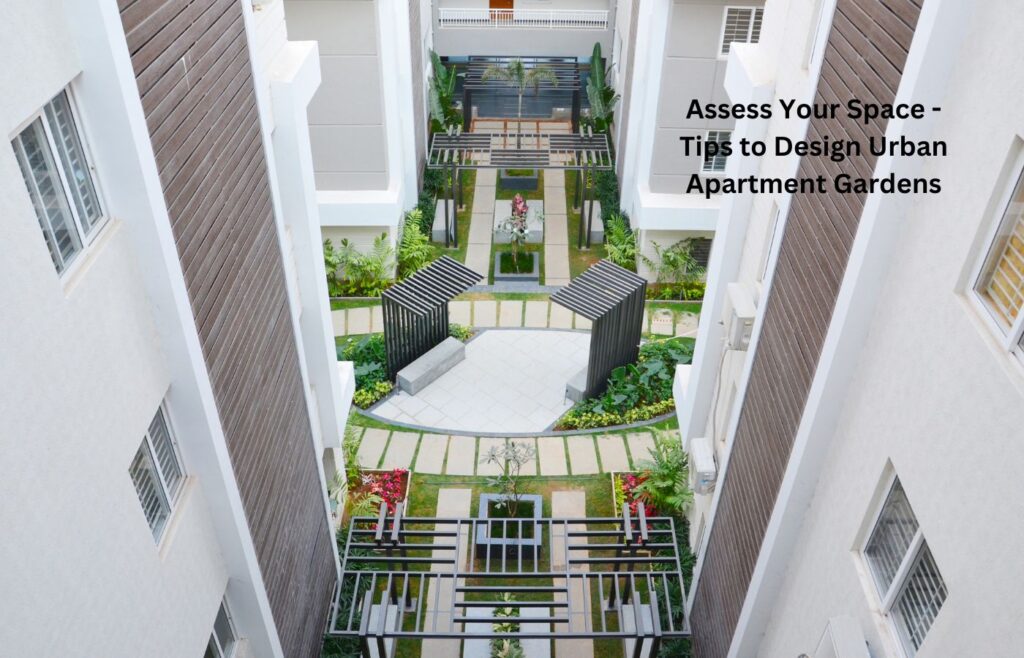
Assessing your area is the first step in designing a small-space garden for your city apartment. Begin by cautiously measuring the available area, whether a balcony, patio, or windowsill, to recognize the scale you have to work with. Take note of any architectural features that could impact your garden layout, including partitions, railings, or windows.
Next, remember the environmental situations of your area, consisting of daylight publicity and wind patterns, and get admission to water assets. Evaluate how these factors will affect plant boom and pick flowers. For instance, in case your balcony gets direct sunlight for several hours an afternoon, choose sun-loving flowers; in case your area is shaded, focus on shade-tolerant sorts.
Additionally, consider how you plan to use the space. Do you need it to be a peaceful retreat for relaxation, a functional place for developing herbs and veggies, or an aggregate of each? Understanding your needs and alternatives will help you prioritize your garden design factors and maximize your confined space.
By thoroughly assessing your area, you may gain valuable insights so you can tell your lawn design choices and set the foundation for creating a small-space garden that completely suits your city’s way of life.
Choose the Right Plants – Tips to Design Urban Apartment Gardens
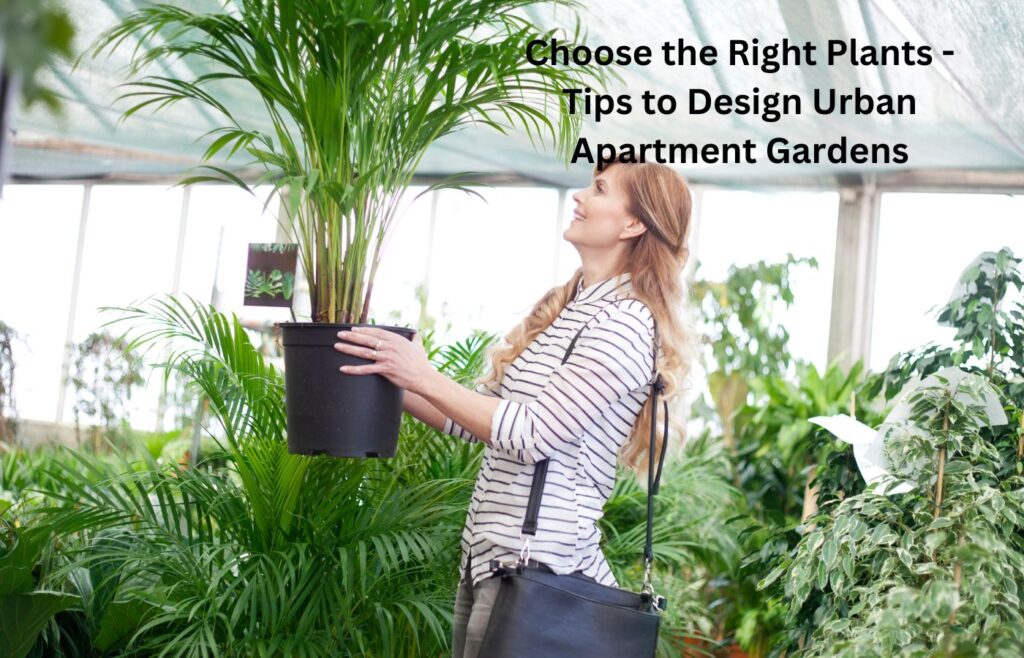
Proper vegetation is essential for a successful small-space lawn in your urban condo. Opt for plant life that thrives within the conditions available, considering factors including daylight exposure, space constraints, and preservation requirements.
Select compact and dwarf varieties that can be nicely acceptable to box gardening, as they may now not outgrow their pots or overwhelm your confined area. Herbs like basil, thyme, and rosemary are incredible choices for small-area gardens, as they are compact, versatile, and provide a bountiful harvest for culinary use.
For flowering vegetation, search for sorts that suit your area and growing situations. Consider alternatives like petunias, marigolds, and pansies for colorful blooms that upload beauty and allure to your city garden. Succulents and cacti are also high-quality alternatives for small-space gardens, as they require minimal preservation and thrive in dry situations.
Additionally, consider incorporating fit-for-human consumption flora into your garden for a bountiful harvest of clean produce. Compact vegetables like cherry tomatoes, peppers, and salad greens are best for box gardening and provide a delicious and nutritious addition to your food.
Ultimately, the key to selecting the proper flora in your small-space lawn is to pick varieties that might be ideal for your area, growing situations, and personal options. You could create a colorful and thriving garden oasis on your urban rental with careful choice and planning.
Container Gardening – Tips to Design Urban Apartment Gardens
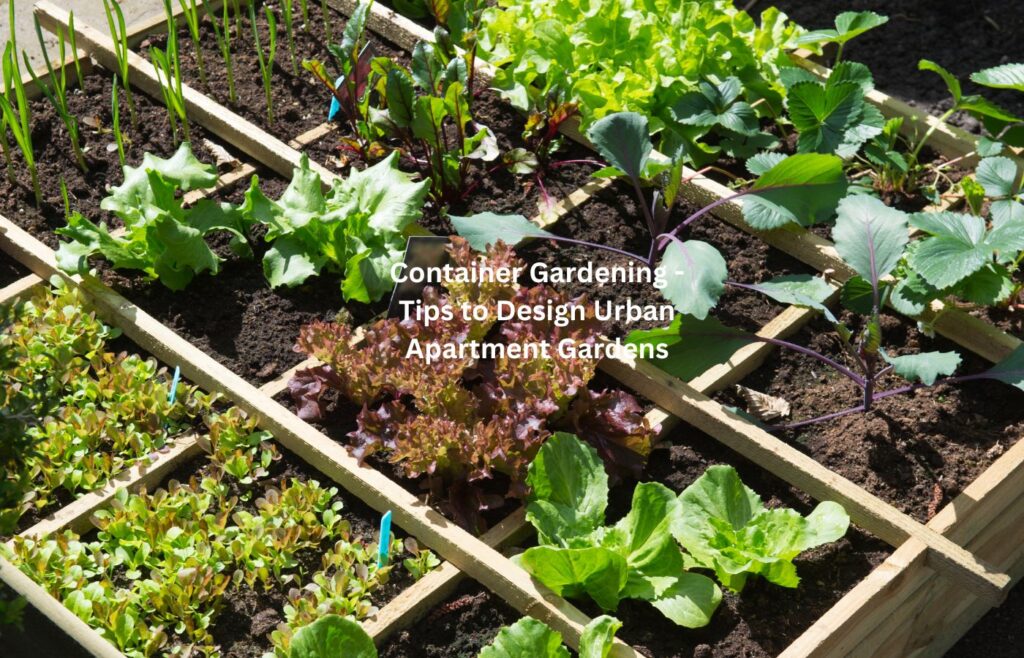
Container gardening is a versatile and area-efficient approach to developing flowers for your urban condo. It includes planting flora, herbs, vegetables, or different greenery in containers consisting of pots, planters, or baskets in preference to inside the ground. This lets your lawn even in small or non-traditional areas, including balconies, patios, or windowsills.
One of the primary benefits of field gardening is its flexibility. You can choose containers of diverse sizes, shapes, and materials to fit your space and aesthetic options. From terracotta pots to smooth modern planters, there may be a box option to supplement any decor fashion.
Additionally, field gardening permits you to control the developing surroundings in your flowers extra effortlessly. You can tailor soil mixes, watering schedules, and fertilization workouts to satisfy the particular needs of each plant, ensuring the most appropriate growth and health.
Container gardening also offers the opportunity for creativity and experimentation. Mix and fit flora, colorations, and textures to create unique and visually attractive preparations. Bins may be effortlessly moved and rearranged to house-converting seasons or design preferences.
Overall, container gardening is an available and rewarding manner to deliver the beauty of nature into your city rental. With a chunk of making plans and care, you could create a vibrant and thriving lawn oasis in even the smallest of areas.
Vertical Gardening Solutions – Tips to Design Urban Apartment Gardens
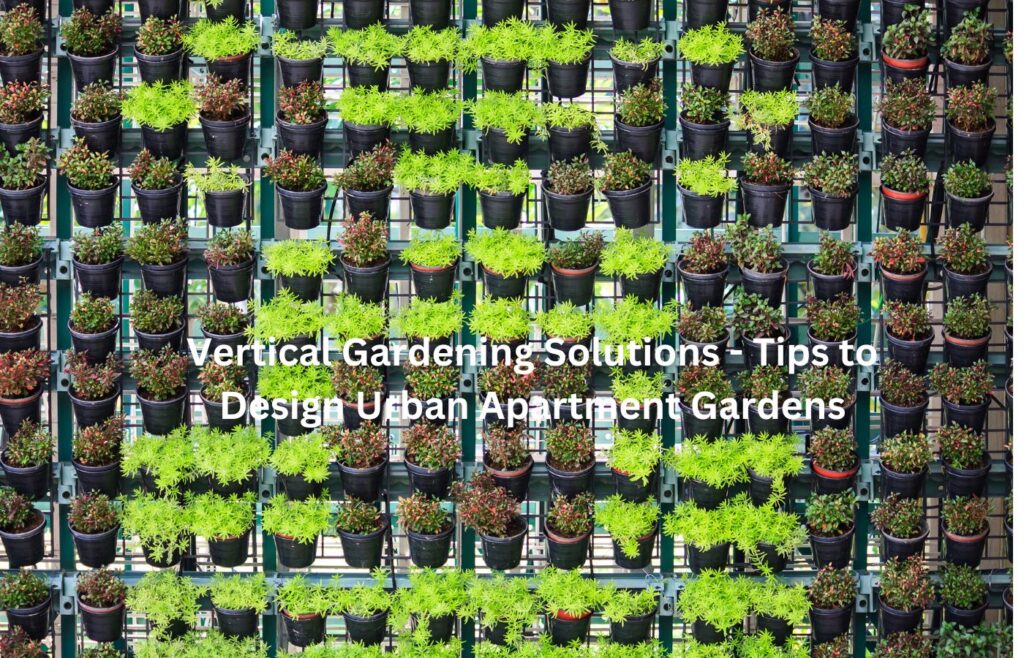
Vertical gardening answers are imaginative methods of utilizing vertical space to develop flowers, best for urban flats in which ground area is constrained. These solutions maximize growing vicinity even as adding greenery and beauty in your living space.
One famous choice is using vertical planters or dwelling walls, including modular panels or pockets hooked up on partitions or fences. These systems can help create a lush vertical lawn, masking naked partitions with cascading foliage and colorful blooms. They are best for developing a lot of flora, including herbs, flowers, and even small veggies, and offer outstanding insulation, sound absorption, and air purification benefits.
Another vertical gardening solution uses trellises and arbors to guide climbing flora with vines, cucumbers, and beans. These structures no longer best upload visible interest in your space but also maximize vertical growing area by allowing plants to climb and unfold upwards. Trellises can be freestanding or connected to partitions or fences, supplying a plant guide while saving treasured floor area.
Hanging planters and baskets are popular vertical gardening solutions, best for suspending flowers from ceilings, balconies, or pergolas. These boxes come in several sizes and styles, permitting you to create stunning hanging gardens filled with cascading foliage and trailing flora. They are best for growing flora that thrive in elevated positions, which include ferns, ivy, and trailing succulents.
Overall, vertical gardening offers an innovative and area-green way to convey the splendor of nature into your urban rental. By utilizing vertical area efficiently, you could create a lush and colorful garden oasis that complements your dwelling environment and brings pleasure into your everyday life.
Utilize Vertical Space Indoors – Tips to Design Urban Apartment Gardens
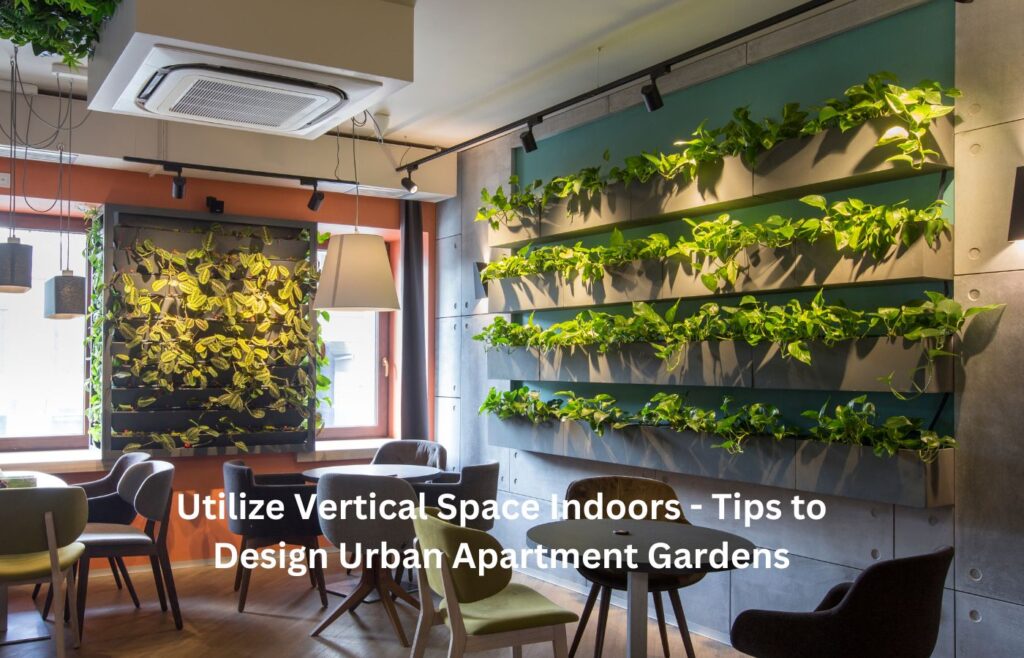
Utilizing vertical areas indoors is a clever strategy for maximizing greenery and bringing nature into your city condo. You can remodel naked walls and unused corners by creatively arranging flowers vertically into thriving indoor gardens.
One powerful way to use vertical space indoors is by putting in wall-set-up cabinets or planters close to home windows or vibrant regions. These cabinets provide a platform for showing several flora, from small succulents to cascading vines, while including visible hobbies in your dwelling space.
Another alternative is to hold plants from ceilings or beams using macramé plant hangers or ornamental hooks. This, now not the most effective, provides a fantastic contact to your decor; however, it additionally frees up valuable ground space for fixtures or other items.
Vertical gardening answers such as residing walls or modular planters can also be tailored for indoor use, developing lush green walls that purify the air and produce lifestyles to any room. These structures assist you in customizing the layout and plant choice to suit your area and aesthetic preferences, creating a lovely focal factor in your indoor environment.
Overallutilizing vertical areas indoors effectively maximizes maximized creates more healthy, extra vibrant dwelling surroundings. By thinking vertically and embracing creative answers, you could rework your urban apartment into a lush indoor oasis that soothes the soul and delights the senses.
Create Functional Zones – Tips to Design Urban Apartment Gardens
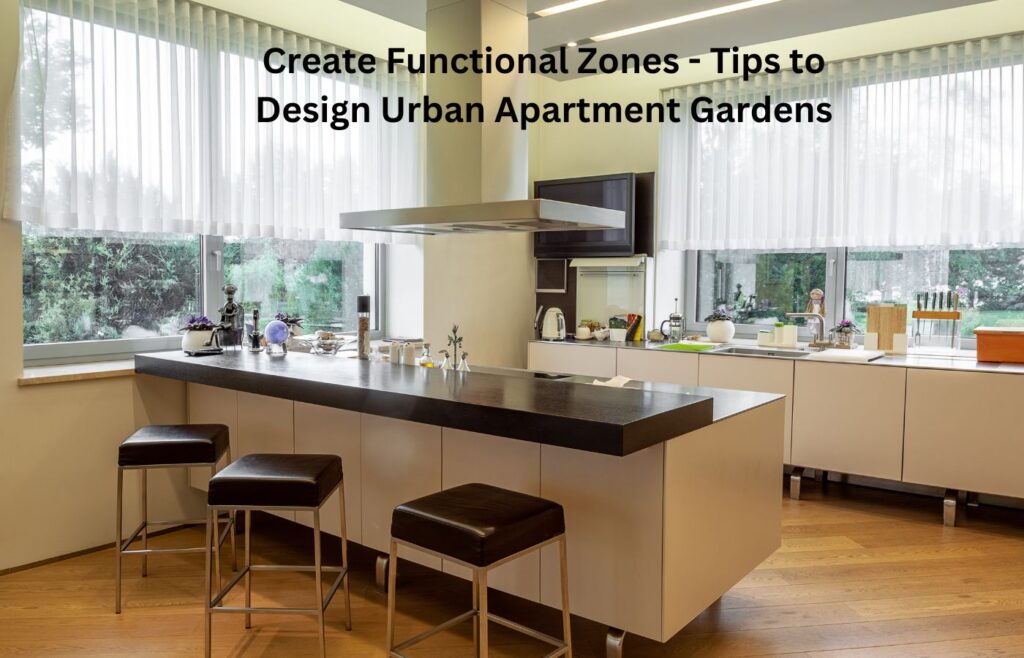
Creating practical zones within your small-space garden is essential for maximizing maximizing and entertainment. By dividing your area into wonderful areas for one-of-a-kind sports, you may make the maximum of every inch of your urban oasis.
Start by identifying the number one activities you want to accommodate in your garden: seating and dining, gardening activities, and relaxation. Then, allocate specific areas of your area to every activity, considering factors that include daylight publicity, privacy, and accessibility.
For instance, designate one nook of your balcony for a cozy seating area with comfortable chairs, a bench, a small table, and perhaps a colorful outdoor rug to outline the gap. This region can be a tranquil retreat for taking part in morning coffee or nighttime cocktails amidst the greenery.
Next, set a separate location for gardening activities, including potting vegetation, pruning, or tending to your vegetable patch. This might be a devoted workbench or table with gardening gear, potting soil, and containers, ideally located near a water source for comfort.
Finally, create a relaxation quarter where you can unwind and recharge surrounded by nature. This can be a hammock or front room chair tucked away in a quiet nook, a soothing water feature, or a meditation area embellished with fragrant plants and herbs.
By developing practical zones inside your small-space garden, you may maximize entertainment even as making the most of your urban oasis.
Consider Edible Gardens – Tips to Design Urban Apartment Gardens
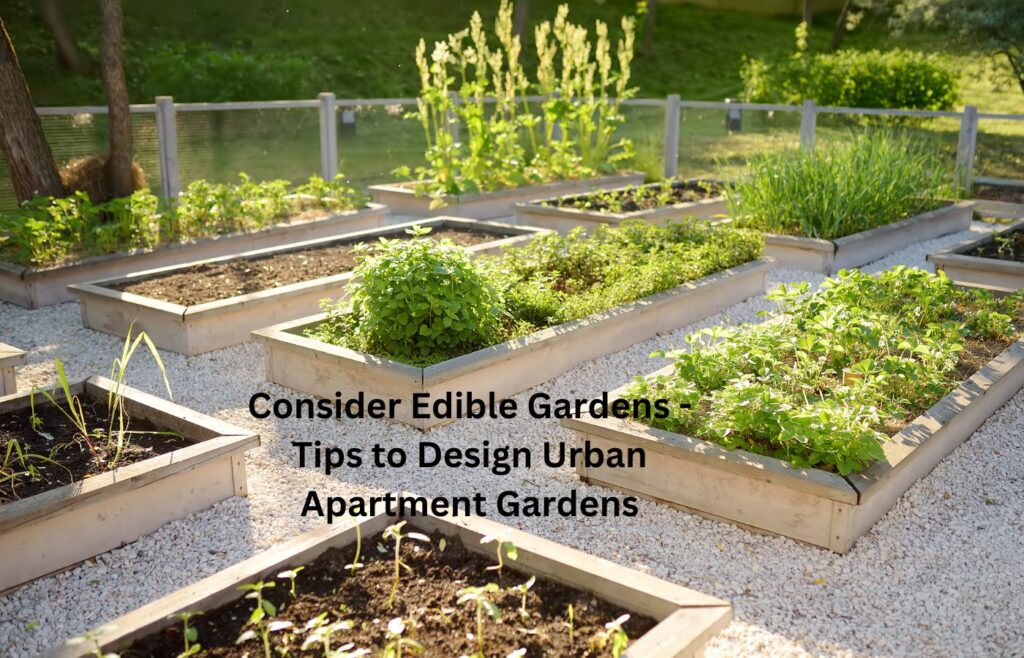
Considering safe-to-eat gardens is an awesome way to maximize the maximizer of your small-space garden to your urban condo, even as playing the pride of developing your clean produce. Edible gardens now not only offer a supply of nutritious meals but also add beauty and variety to your living space.
When planning a fit-to-be-eaten-for lawn, choose compact and effective plants properly for container gardening. Herbs like basil, parsley, and mint are superb alternatives for small spaces, as they could thrive in pots on windowsills or balconies and provide a consistent delivery of flavorful additions to your food.
Vegetables like cherry tomatoes, peppers, and salad veggies are also properly desirable for container gardening and may yield a bountiful harvest in a restricted space. Choose compact or dwarf sorts, which can be, in particular, bred for small gardens and awareness of excessive-yield crops that provide a great return on investment.
Remember to incorporate fit-for-human consumption plants and culminate them into your garden for introduced variety and visual hobbies. Edible flowers like nasturtiums, pansies, and calendula can be grown along herbs and greens, including color and taste, to salads, cakes, and cocktails.
Overall, fit for human consumption, gardens provide a sensible and profitable manner to maximize your small-space garden while playing the pleasures of homegrown produce. With some planning and care, you may create a thriving, suitable, eating lawn that nourishes the frame and soul of your urban condominium.
Seasonal Interest – Tips to Design Urban Apartment Gardens
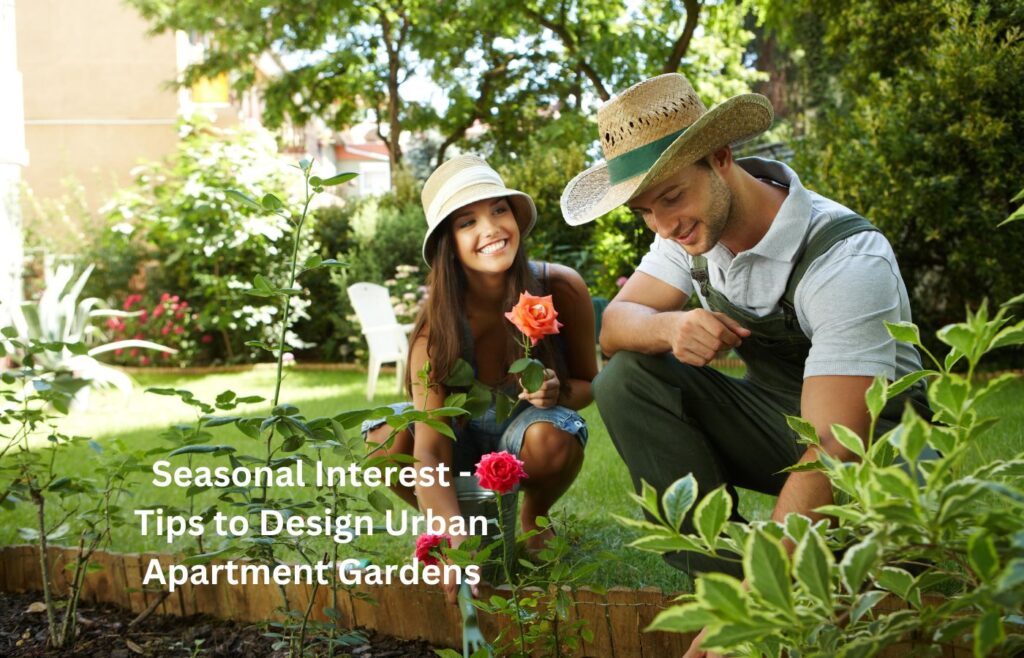
A seasonal hobby is a key consideration whilst designing a small-space garden for your urban condo, ensuring that your garden remains colorful and visually appealing for the year. You can create a garden that delights the senses and evolves with the converting seasons by choosing plant life that provides several colors, textures, and blooms across distinct seasons.
Start selecting a mix of evergreen vegetation, flowering perennials, and seasonal annuals to offer a year-spherical hobby. Evergreen flowers consisting of boxwood, lavender, and ornamental grasses provide structure and texture for your garden, serving as a backdrop for seasonal blooms.
For seasonal shade, select flowering perennials that bloom at unique instances at some point of the year, ensuring that your lawn is always alive with color. Choose spring blooms, including tulips and daffodils, summertime vegetation like roses and daylilies, and fall favorites, including asters and chrysanthemums.
In addition to perennials, incorporate seasonal annuals into your lawn for bursts of shade and perfume. Plant cool-season annuals like pansies and violas in spring and fall, and switch to heat-season annuals like petunias and marigolds for summer color.
By cautiously deciding on vegetation that offers seasonal hobbies, you could create a small-space garden that delights the senses and provides 12 months-round enjoyment for your city apartment.
Maximize Light Exposure – Tips to Design Urban Apartment Gardens
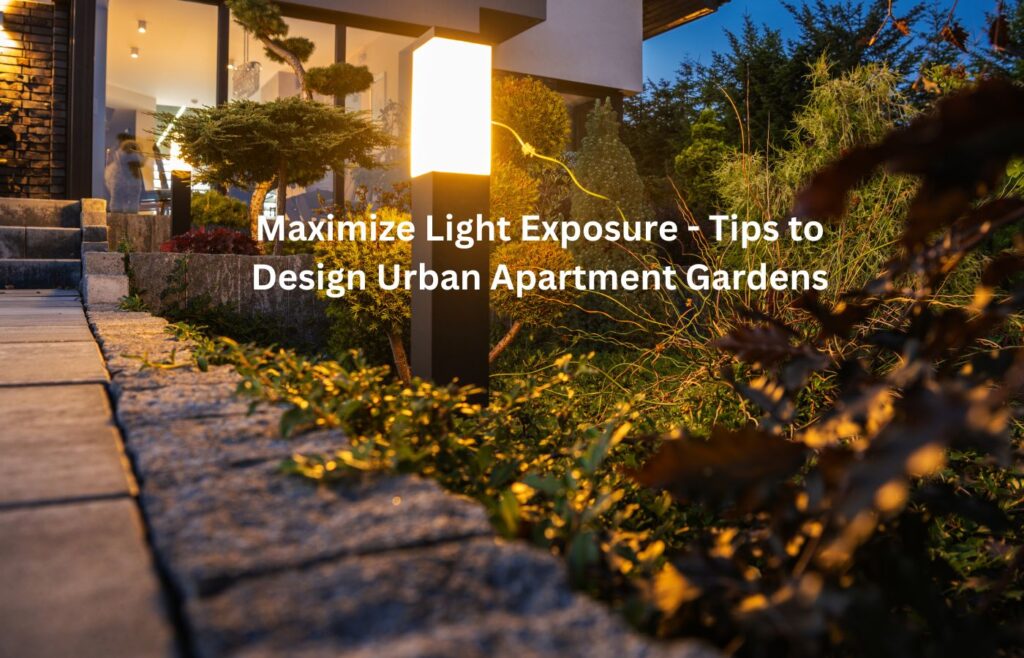
MaximizingMaximizingicity is crucial for the fulfillment of your small-area lawn in a city rental, as many plants require ample sunlight to thrive. By strategically positioning your vegetation and utilizing surfaces, you could make the maximum of available light and create the most advantageous growing conditions for your garden.
Start by identifying the sunniest spots for your apartment, which includes south-dealing with windows, balconies, or rooftops, wherein plants will receive the maximum direct daylight. Place sun-loving plant life, herbs, vegetables, and flowering plants in those regions to ensure they obtain the mild they want for a healthy boom.
For regions with much less sunlight, together with north-going through windows or shaded corners, select color-tolerant vegetation like ferns, ivy, and peace lilies that may thrive in low-light situations. You can maximize by using reflective surfaces, mirrors, or mild-colored partitions to dance mild round and brighten darkish corners.
Additionally, recollect the use of artificial develop lights to supplement herbal daylight and ensure that your plants acquire ok mild, particularly throughout the iciness months whilst daylight hours are shorter. LED grow lighting fixtures are energy-green and maybe, without difficulty, adjusted to offer the specific spectrum of light that flowers need for photosynthesis.
Maximizing mimMaximizingy and creating top-rated developing conditions for your small-space lawn can ensure your flowers thrive and flourish in your city apartment.
Watering and Maintenance – Tips to Design Urban Apartment Gardens
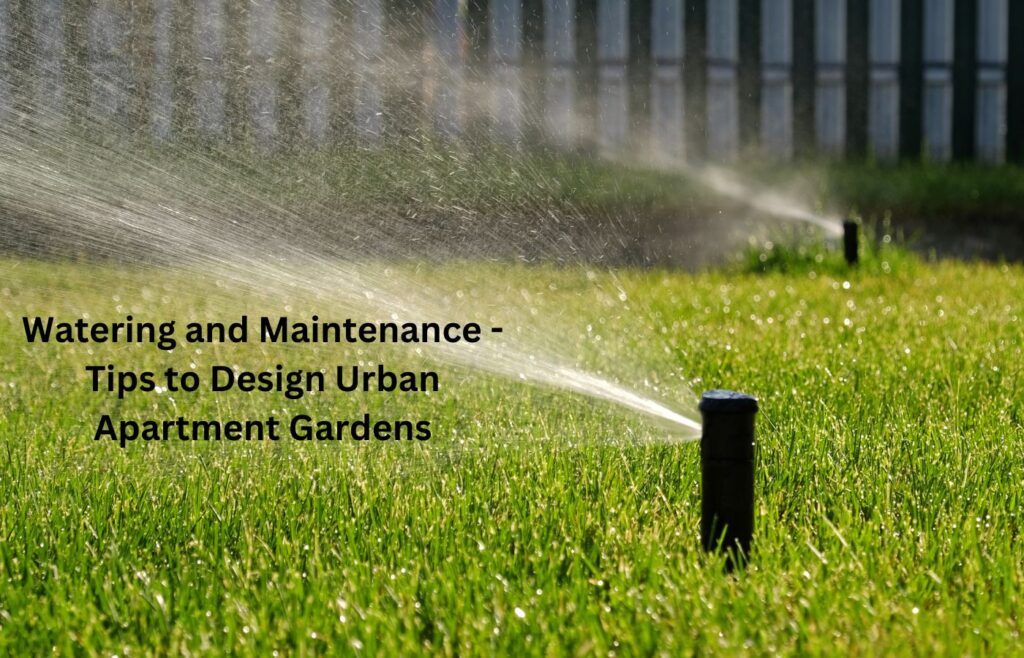
Watering and renovation are vital factors in caring for your small-area lawn in a city condominium, ensuring your flowers remain wholesome and thriving. By growing a regular watering habit and staying on the pinnacle of upkeep obligations, you may create an environment where your garden can flourish.
Start by establishing a watering schedule primarily based on the precise needs of your flora and the environmental situations of your space. Pay interest to elements, sunlight exposure, temperature, and humidity, as those will affect how regularly and how much you want to water your plants. Generally, it’s first-rate to water deeply; however, occasionally permitting the soil to dry out slightly between waterings saves you overwatering and root rot.
Invest in self-watering boxes or irrigation systems to assist in preserving consistent moisture ranges for your bins, mainly when you have a hectic schedule or tend to neglect to water your plants. These structures can help ensure your flora receives the water they need, even while you’re not around.
In addition to watering, normal preservation responsibilities include pruning, deadheading, and fertilizing, which are essential for keeping your garden looking its best and searching for its best. Prune returned overgrown foliage, put off spent blooms, and fertilize your plants as needed to encourage healthy growth and flowering.
By staying proactive with watering and renovation, you could create a thriving small-area garden that brings beauty and joy to your city condo.
Conclusion – Tips to Design Urban Apartment Gardens
In conclusion, designing and retaining a small-space lawn in your city condominium is a rewarding undertaking that permits you to connect to nature and create a peaceful sanctuary amid metropolis life and tips to design urban apartment gardens. By imposing the tips and techniques in this guide, you may rework even the smallest areas into a vibrant and thriving lawn oasis.
Assessing your space, deciding on the proper plant life, and utilizing various solutions are crucial in growing a practical and aesthetically appealing lawn. Container gardening, suitable for eating gardens, and incorporating seasonal hobbies make certain that your garden stays stunning and sensible at some point in the year.
Maximizing light exposure, watering, and regular maintenance is crucial for the health and vitality of your plants, ensuring that they thrive in their urban environment. By creating functional zones and considering the specific needs of your space, you can maximize usability and enjoyment while making the most of your small space garden.
Ultimately, a small-space lawn is more than only a collection of flowers – it’s a residing, respiratory oasis that brings pleasure, splendor, and calmness to your city condo. So roll up your sleeves, dig within the dirt, and allow your small-area garden to flourish!
What are some low-maintenance plants suitable for urban apartment gardens?
Consider easy-care plants like succulents, herbs, ferns, and dwarf varieties of vegetables or fruit trees that thrive indoors or in small outdoor spaces.
How do I deal with limited sunlight in my urban apartment?
Choose plants that tolerate low-light conditions, such as Snake Plants, Pothos, Peace Lilies, and ZZ Plants. Additionally, maximize natural light by placing plants near windows or using grow lights.
Can I grow vegetables in my urban apartment garden?
Yes, you can grow vegetables in containers or small raised beds on balconies, patios, or windowsills. Choose compact varieties suitable for container gardening and ensure they receive adequate sunlight and water.
What are some creative storage solutions for urban apartment gardens?
Consider multifunctional furniture with built-in storage, vertical shelving units, hanging organizers, or repurposed items like old pallets or crates to maximize space for gardening tools, pots, and supplies.
How can I create a cozy outdoor oasis in my urban apartment?
Incorporate elements like comfortable seating, decorative lighting, potted plants, and soft textiles to transform your outdoor space into a relaxing retreat.
What are some tips for container gardening in urban apartments?
Choose lightweight, durable containers with drainage holes and use high-quality potting mix suitable for container gardening. Group plants with similar water and sunlight needs together and water regularly, ensuring proper drainage.
How do I deal with pests in my urban apartment garden?
Monitor plants regularly for signs of pests like aphids, spider mites, or scale insects. Use natural remedies like neem oil or insecticidal soap to control infestations, and encourage beneficial insects like ladybugs or lacewings.
Can I compost in my urban apartment?
Yes, you can compost using small-scale methods like worm composting (vermicomposting) or bokashi composting, which are suitable for urban environments and produce nutrient-rich compost for your plants.
How do I incorporate sustainable practices into my urban apartment garden?
Practice water conservation by using drip irrigation or collecting rainwater, choose organic and locally sourced materials, and compost kitchen scraps to reduce waste and nourish your garden naturally.
The article “10 Tips to Design Urban Apartment Gardens” is written by HomeGardenIdeas.com. Our team of passionate writers and experts shares tips and inspiration on gardening, home improvement, and design to help you create your dream space.

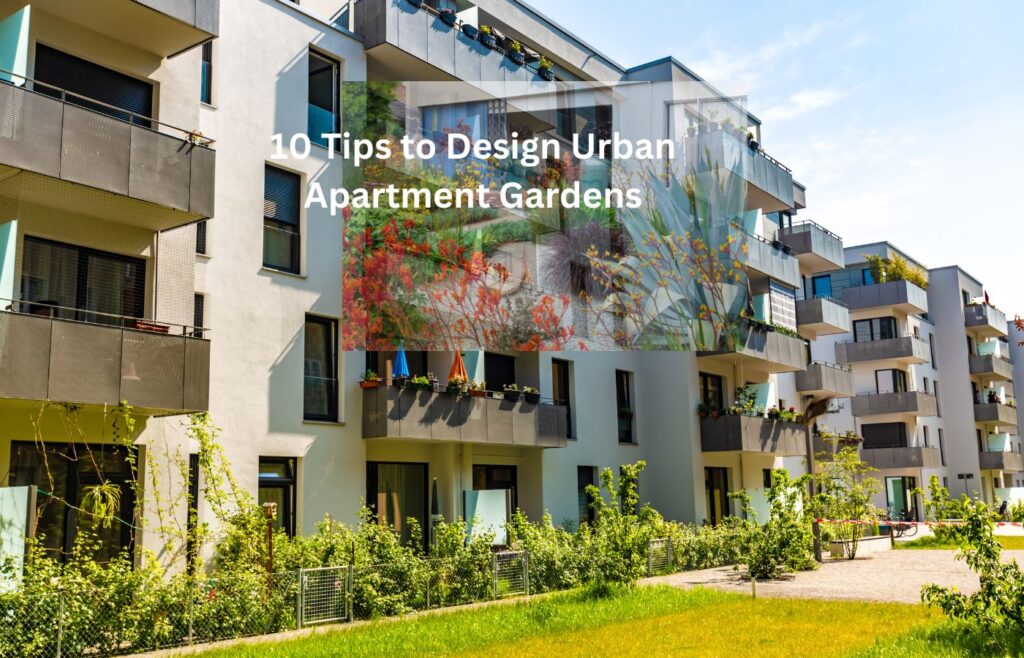
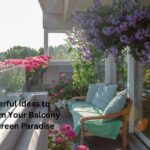
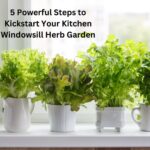
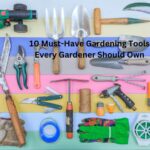
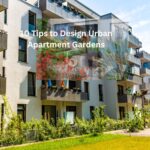


lovely! very nice, amazing post thanks for sharing